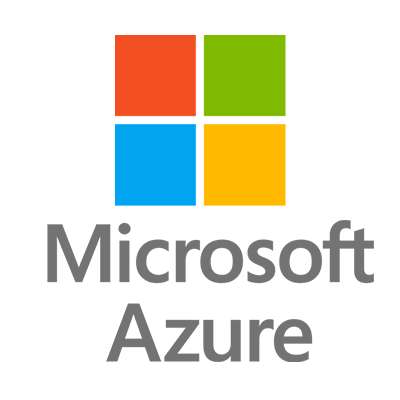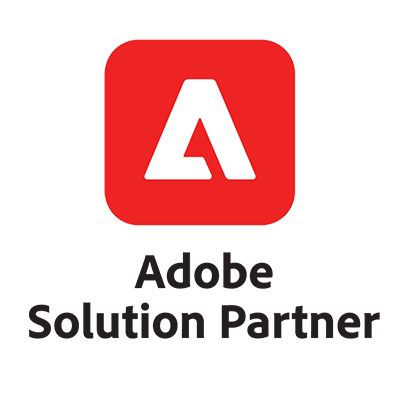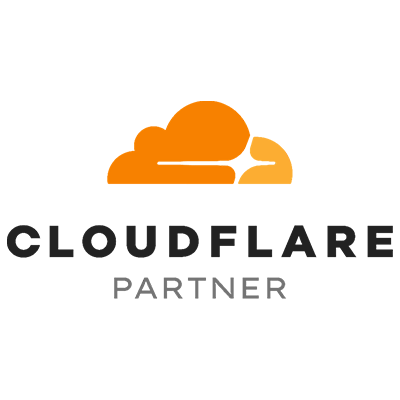Thank you!
Just a Second, One of Our Experts Will Get in Touch With You Shortly

Have you ever wondered how large the fitness app industry is? The global fitness app market was worth approximately $13.78 billion in 2023 and is expected to increase to $48.53 billion by 2030, with a compound annual growth rate (CAGR) of 18.3%. With the growth of digital health solutions, many entrepreneurs are eager to build an app like MyFitnessPal to meet the rising demand for health and fitness tools. More people are using mobile applications to track their fitness goals, diets, and overall well-being. MyFitnessPal, an app that helps users remain on track with their exercise and nutrition programs, is a leading fitness app in this category.
It makes it easy to log meals, count calories, and monitor exercise routines, making it a popular tool among millions. Seeing its popularity, many businesses and entrepreneurs are now interested in knowing how to build an app like MyFitnessPal?
To develop a fitness app like MyFitnessPal takes much more than just writing code and compiling a list of features- it is the possibility of truly making a difference for people in terms of helping them accomplish what they want. The potential here is limitless, whether you want for calorie tracking, giving out workout tips, or even getting in touch with a supportive users community.
Thus, partnering with a well-known and reputable healthcare app development company, like The NineHertz, can ensure that your app will not only be pleasant for the user but would come with all the desired features from the usage perspective. Why? Because, in the world of custom mobile app development, it’s all about creating something people will love to use every day.
Table of Contents
ToggleSo, what is MyFitnessPal? MyFitnessPal is an all-in-one fitness app where a user can reach all of their health goals by noting intake of food, exercise, and everything about their overall well-being. MyFitnessPal contains more than 14 million foods in its database through which users log their meals, calculate calories, and track macronutrients such as protein, carbohydrates, and fats. Whether you are working towards weight loss, weight maintenance, or muscle gain, MyFitnessPal will personalize daily calorie goals based on what the user says about themselves, like age, weight, and activity level. But it’s more than just a calorie counter.
It also supports the tracking of exercises, which can be logged and synchronized with popular fitness devices from Fitbit and Apple Watch, ensuring users get an integrated view of their activity levels, from the number of steps taken to the calories burned. What really separates MyFitnessPal is its community approach. It allows users to connect with friends, join groups, and participate in challenges-all which contributes to increased motivation and accountability.
Premium features on the fitness and nutrition app would include more advanced insights, plus custom macronutrient goals and more detailed reports, meaning it is appropriate for beginner fitness enthusiasts and seasoned athletes alike. As far as nutrition or exercise, MyFitnessPal gives you all the tools you need to stay on track and maintain consistent results.
It is a big task to build an app like MyFitnessPal, but if you break it down, it is completely doable. There are six relatively easy steps that will get you there.
To create an app like MyFitnessPal, first learn about the fitness app market and target audience. See what is already available out there: apps like MyFitnessPal, Fitbit, or Nike Training Club. Determine what their users like most and what they lack in certain situations, so you can add more value to your app. In doing so, you’ll easily understand what your app specifically needs to have and in what way your app will be better than all the existing apps.
Now that you have your research in hand, it’s time to decide what your app will do. MyFitnessPal is really good for tracking food and exercise. Maybe it could also incorporate personalized workout plans, social sharing, or mental wellness tracking. No matter what your app does, make sure your app’s usability and functionality make a difference in the fitness journey.
You’ll likely be targeting iOS, Android, or possibly both. That depends on who you think will be your users, how much money you have to spend, and other factors. Most developers actually do release their apps first on only one platform, typically iOS, and then deploy to the other. But if you have the resources, launching your app on both platforms simultaneously will enable you to tap into maximum potential reach right away.
The usability of an app largely determines its effectiveness. Design a user-friendly interface that is straightforward to navigate. A user should be able to input their food or their workouts within seconds. Secondly, it has to be smooth about the experience (UX) so that it will make users go back to the app more often.
Now, the technical development part: It’s here that features and design come to life for either your custom mobile app development team or a healthcare-focused agency. Ensure it is stable and scalable to work over different devices. Testing is very important here; catch bugs and fix them before launch.
Launching the app is just half the battle. This is because, after launching, you need to have a good strategy for marketing the app so that it can actually be seen. A smart channel of word of mouth for the app is social media campaigns, collaborations with fitness influencers, and offering free trials. After the launch, customer feedback is gold—use it to keep improving your app.
[Also read: How to Make an App Like DoorDash]
While you build an app like MyFitnesspal, do note that all apps are not the same. There is more than one type of fitness app that you can create, each targeting a different segment of users. While a combination of fitness and mental health might prove to be a winning combination for users, there are other groups of personal training apps. Let’s take a look at five of them..
The fitness tracking app tracks the number of physical activities done: like steps taken distance covered, and calories burned. They normally integrate with wearable devices like Fitbit or Apple Watch.
Workout apps like Nike Training Club or Freeletics provide users with guided workout routines. They can offer anything from cardio workouts to strength training, often with video tutorials.
MyFitnessPal fits within this category. Diet and nutrition apps monitor food taken, count calories, and seek balanced diets.
Although not exactly a physical fitness tool, mental health apps like Calm and Headspace focus on meditative practices with moments of relaxation.
Apps connect users with personal trainers for personalized coaching sessions or for a customized workout plan. This will give you an idea of which app to build, and you can isolate certain features it has, and why people will use such an app and tailor the app according to user expectations.
[Also read: How to Create an App like Careem]
The cost required to build an app like MyFitnessPal varies depending on a number of factors, including the functionality, app design complexity, and development team you choose. Here is an approximate breakdown of the fitness app development cost:
| Feature/Aspect | Estimated Cost |
|---|---|
| Basic Features (Food & Workout Logging) | $15,000 – $25,000 |
| Advanced Features (Integration with wearables, social sharing, etc.) | $25,000 – $40,000 |
| Backend Development | $10,000 – $20,000 |
| UI/UX Design | $5,000 – $10,000 |
| Testing & Launch | $5,000 – $8,000 |
| Total Estimated Cost | $35,000 – $75,000 |
Keep in mind that these figures are approximations and may vary depending on the location of the development team and their experience.
Also Read:
How to Develop an App Like Strava?
How to Build an App Like Fitbit?
Health and fitness app like MyFitnessPal offers functionality and a smooth interface. For better fitness tracking, calorie counting, or personal health, an app should be intuitive, and efficient, and keep users motivated. Let’s discuss the essential features that are needed to build an app like MyFitnessPal.
This is the key feature of all fitness apps. Enabling users to create their personalized health profiles allows them to input personal information such as age, height, weight, activity levels, and fitness goals. The application, once this data is entered, would allow for personalized recommendations instance, according to MyFitnessPal, an application would use this data to set daily calorie goals.
This is where your app can surpass that by offering customized fitness programs, dieting plans for a given health condition, say for hypertensive users, low-sodium diets, and so on; daily insights about user progress. The whole idea of personalization attracts users to the app: it will almost be the most tailored experience one would require. The more familiar the app gets with a user’s habits and preferences, the more precious the app becomes.
One of the features that make MyFitnessPal very popular is its huge food database, which will assist users in logging their meals easily. For your application, a massive data bank would be significant in including globally consumed food items with brand names and restaurant meals. Further, you should provide a feature where users can create custom recipes or home-cooked meals. The barcode scanner makes it easier to scan packaging from food, and the app will pull up all sorts of nutrition details. People love convenience, and this feature can significantly cut down on the time and effort needed for tracking food intake.
Compared to dieting, fitness tracking is vital. The input of a variety of exercises into the system-whether yoga to weightlifting should be able to log activities in terms of duration, intensity, and calories burned. Advanced features may also be offered such as recording reps and sets for strength training or even including videos and tutorials for various workouts. It would be a killer feature to integrate it with wearables like an Apple Watch, Garmin, or Fitbit, which automatically captures steps, heart rate, or any other metric. It has a lot of benefits of having everything in one place making your app a go-to application both for diet tracking as well as exercise tracking.
Everyone likes to see fruit for their labour. Users can visualize how they are doing through charts and graphs tracking weight loss, muscle gain, or daily caloric intake. Weekly summaries showing how many calories a user consumed versus burned, or how many days of the week the user hit her activity goal, can keep users pressing for more consistency. You can go one step ahead by providing progress reminders and monthly reports. However, some apps are very generous and provide a milestone reward for continued engagement. These are known as badges for achieving certain goals.
Reminders are perfect to keep the users involved, especially if the people are busy. Retention rates can surely improve by reminding them to log meals, reminding users to drink water throughout the day, or reminding them to exercise for the day. You can also send motivational messages to users when they hit their goals or to keep them motivated on their fitness journey. Tailor push notifications. For instance, send personalized nudges such as: “Great job staying within your calorie goal! Ready for a 10-minute walk?” rather than the generic “You’re not reaching your calorie goal”.
For instance, smartwatches, and wearables are where many fit enthusiasts derive their reliance. Your application may also synchronize with third-party wearables such as Fitbit and Apple Watch with some even allowing Garmin, thereby making it possible for the user to enjoy real-time syncs from their devices. This can be done by making this possible for third-party apps such as Google Fit or Apple HealthKit so that the user does not have to manually update his or her stats of workout or activity. Making this ability to be pulled into the app to get a holistic fitness overview will make the app relevant and usable for the user.
Whatever the case, fitness becomes much more enjoyable with friends. Adding the social element lets users share their results on social media outlets or in the app community itself. You can design challenges where the users compete with one another towards milestones in their fitness or other personal goals and reward winners with badges or app-specific rewards. Building a community in your app gives the users an opportunity to connect with like-minded people, to share tips, support each other, and even compete in a friendly manner. Communities can create loyalty, and when they feel part of a community that can support them, they are more likely to want to continue engaging with the application.
Monetization will be the key to the success of every application. Here, your core features could be free but you can monetize it to a premium level by collecting steady revenue through advanced features. Some paid features will include personalized meal plans, an advanced workout routine, ad-free access, and direct consultation with fitness trainers and dietitians. Recurring revenue can be generated via a subscription model, including but not limited to the premium tier on MyFitnessPal, which could provide deeper analytics and insights. Even so, one-time in-app purchases can be made, such as for particular features, maybe fitness programs designed by influencers or nutrition guides.
Add AI-driven features that can further analyze a user’s habits and suggest how they can improve. For example, it might be recommending better options after one has tracked meals for a few weeks or pointing out patterns, like excessive snacking at night. AI will suggest workouts based on progress toward a user’s goals. This brings AI and machine learning into the picture, and it will give users the most personalized experience ever, almost like having a personal trainer and nutritionist in one’s pocket.
[Also explore: How to Build an App Like Expedia]
Choosing the correct technology stack is essential for developing a solid and scalable fitness app. Each component of the stack is critical to ensure seamless functionality, high performance, and scalability. Here’s an overview of the key technologies you’ll need to create an app like MyFitnessPal:
| Aspect | Tech Stack/Tools |
|---|---|
| Programming Languages | Swift (iOS), Kotlin (Android), JavaScript, React Native (for cross-platform) |
| Backend Development | Node.js, Python (Django/Flask), Ruby on Rails |
| Database Management | MySQL, PostgreSQL, MongoDB |
| Cloud Services | AWS, Google Cloud, Microsoft Azure |
| Push Notifications | Firebase Cloud Messaging, Twilio |
| Payment Gateways | Stripe, PayPal, Square |
| API Integration | RESTful APIs, OAuth, Google Fit API, Apple HealthKit |
| Wearable Integration | Apple HealthKit, Google Fit SDK, Fitbit API |
| UI/UX Design Tools | Figma, Adobe XD, Sketch |
| Analytics Tools | Mixpanel, Google Analytics, Firebase Analytics |
Selecting a solid tech stack to develop an app like MyFitnesspal ensures that your app performs well under high traffic, processes large amounts of user data, and scales effectively as the app grows in popularity.
To create an app like MyFitnessPal is much more than just creating yet another calorie-counting tool or, for that matter, another workout-tracking helper-actually, it is creating a personal companion to the user’s very own health journey. Think about this: your app could be what gets someone to eat healthier, move more, or, for that matter, feel better about themselves.
The potential is huge, and therefore you want to get it right from the very start. But however exciting this all sounds, we understand that building an app from scratch can be a pretty overwhelming task. One has to consider so much, from studying the competition to choosing features, creating an intuitive design, and making sure that your application will be smooth, fast, and easy in its use. And that’s where having the right partner makes all the difference. With healthcare app development companies like The NineHertz, you can be assured that your vision will become a reality with the guidance of a trusted healthcare app development company.
The NineHertz is famous for advanced custom mobile app development solutions that cater to unique needs. They understand how each and every app is different from every other app, just like everyone’s fitness journey. Whether it is a basic calorie tracker or an advanced feature-enriched application integrated with wearables, workouts, meal plans, and community features, The NineHertz guarantees quality assurance at every step, turning your app into something more than functional-an app that users will enjoy and come back to every day because of their experience and expertise.
So why wait? Whether you are a fitness expert with a desire to help others or an entrepreneur looking to get into the thriving wellness market, there’s no better moment to start your fitness app development. With a Fitness app development company, you receive more than simply a development team; you get a partner who is as invested in your app’s success as you are. Together, you can design an app that not only satisfies your commercial objectives but also creates a genuine, long-term difference in people’s lives.
Let us discuss some frequently asked questions regarding how to build an app like MyFitnessPal:
Yes, you can! While developing a fitness app involves technical skills, working with a development team that specializes in custom mobile solutions can help you bring your vision to reality. With proper planning, design, and execution, you may create an app personalized to your specific ideas.
The cost to create an app like MyFitnessPal varies based on complexity, features, and development team. On average, a basic fitness app like MyFitnessPal costs between $35,000 and $75,000. If you add advanced features such as AI-driven insights, wearable integration, or personalized training routines, the expenses may increase.
Fitness apps can generate revenue and be very profitable. With subscription-based models, in-app purchases, and partnerships with brands or health institutions, there are numerous ways to monetize. The fitness app industry is booming, and with a well-designed app, you can tap into a market projected to grow to $15 billion by 2027.
My name is Hemendra Singh. I am a Director and Co-founder of The NineHertz, IT Consulting Company. I am having a keen interest in the latest trends and technologies that are emerging in different domains. Being an entrepreneur in the field of the IT sector, it becomes my responsibility to aid my audience with the knowledge of the latest trends in the market.
Get a precise estimation for the time and cost of your project idea. No surprises, just clarity.
Discover how AI implementation can 10X your business revenue. Learn the secrets to scalable success!
Find out why 90% of business ideas fail after launch and how you can be among the successful 10%.





Just a Second, One of Our Experts Will Get in Touch With You Shortly
Take a Step forward to Turn Your Idea into Profit Making App





